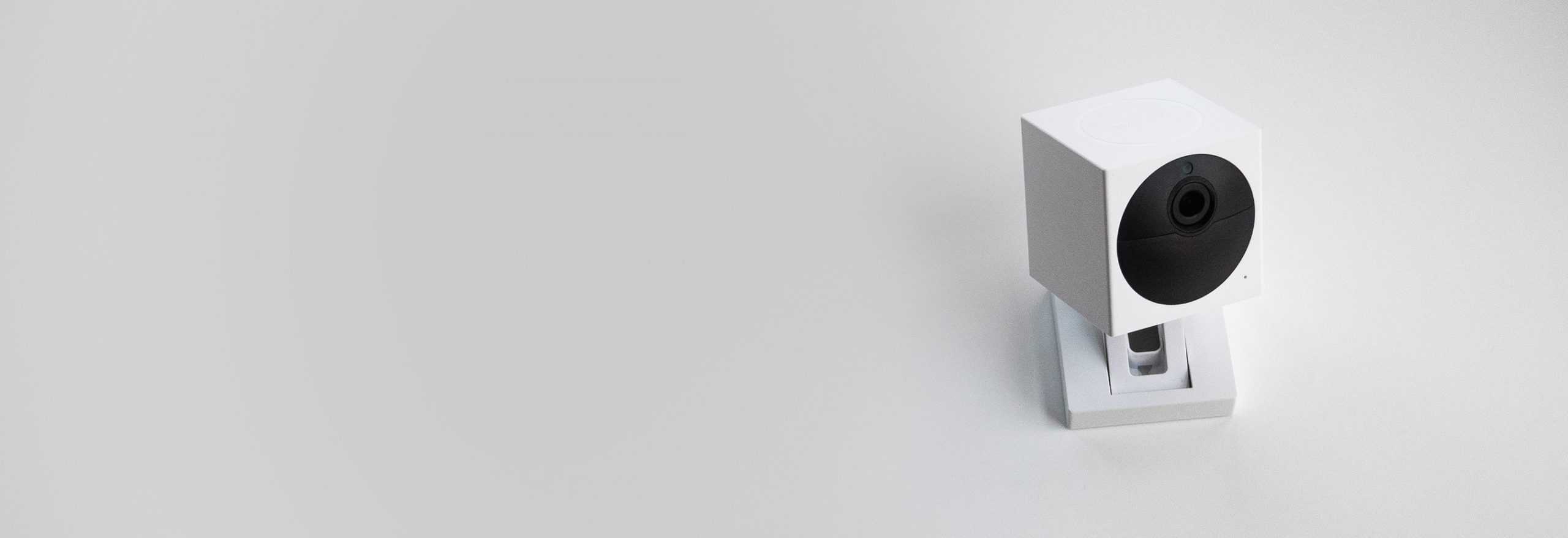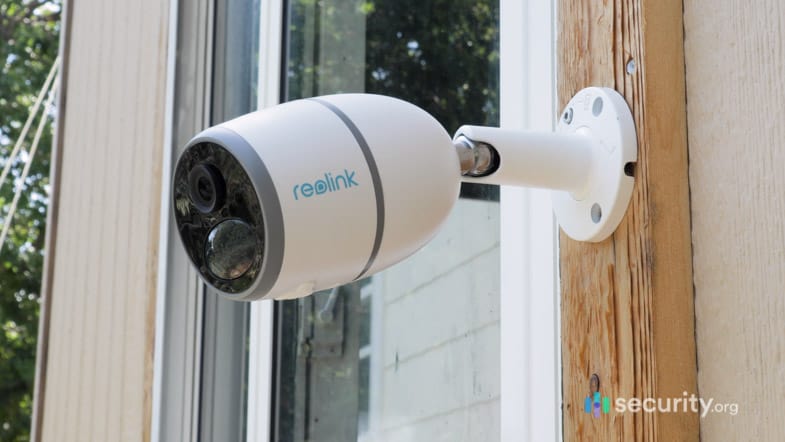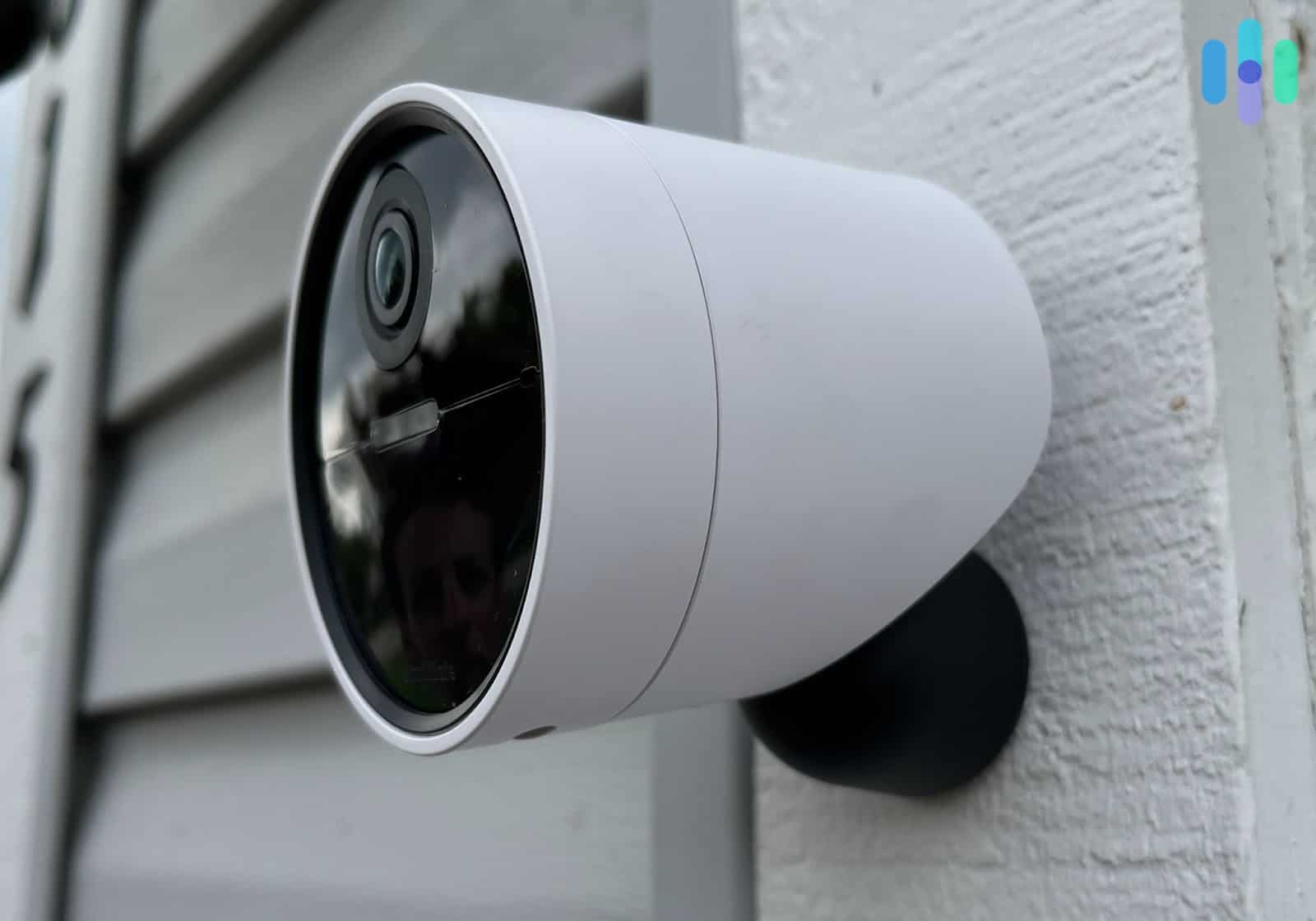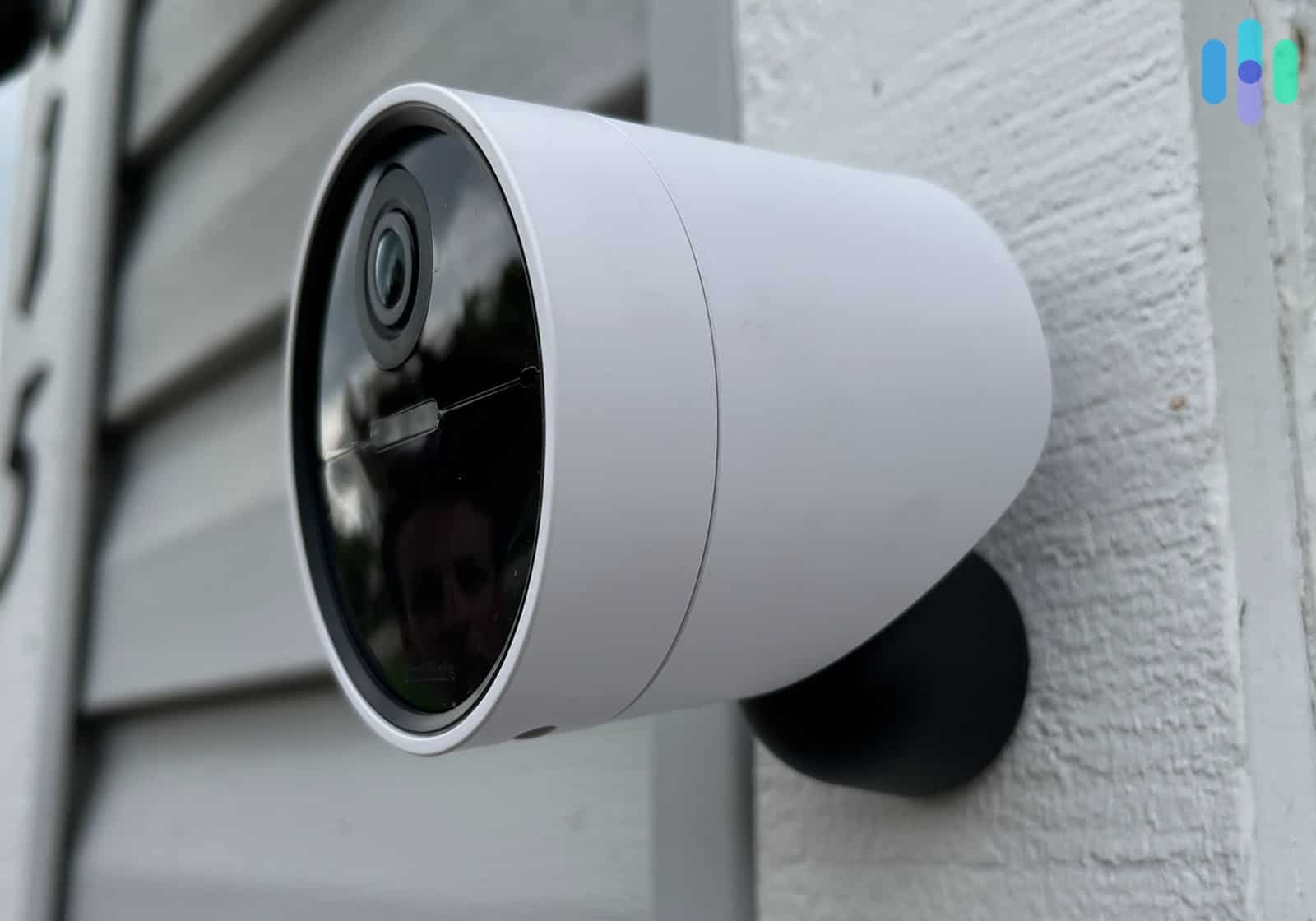Editor’s Note: Brands like SimpliSafe have a range of wireless cameras and regularly discount new plans. Sometimes they’ll even throw in a free camera. Learn more in our guide to SimpliSafe Costs and Packages.
Security cameras used to be so simple. You mounted them, plugged them in, and hooked them up to a recorder, and that’s it! You’d have yourself a working security camera.
But it’s not so simple anymore. You have to decide between an IP camera, a wired camera, a Wi-Fi camera, and so on. All the options are confusing, but surely, one of the most mysterious terms when it comes to security cameras are “wireless cameras.” So today, let’s demystify it and try to understand how wireless security cameras work.
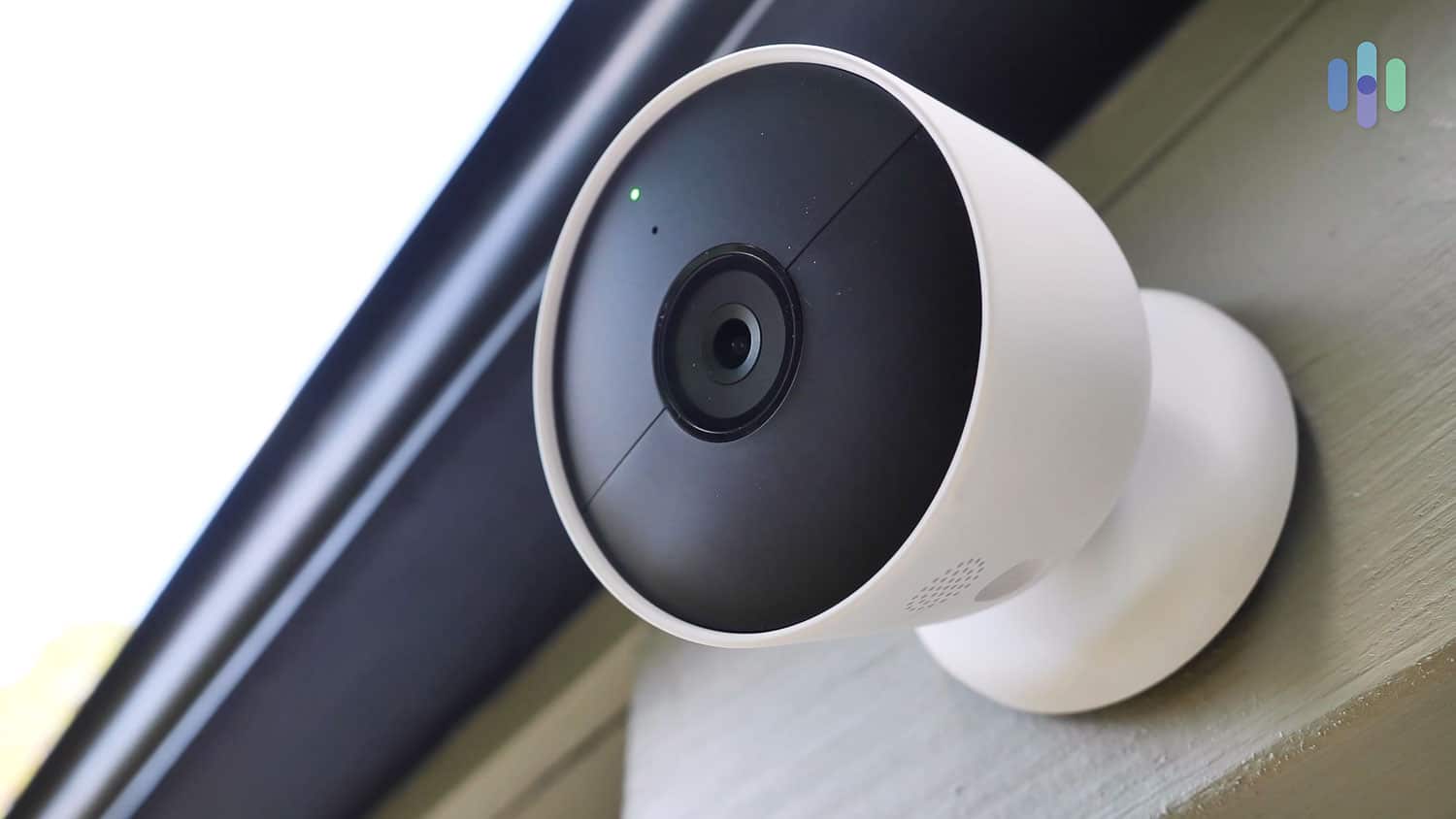
How Do Wireless Security Cameras Work?
You don’t have to study our guide to security cameras to know that their primary function is to let you see what’s happening at your home. The simple definition of wireless cameras is that they perform that function with fewer cords than wired cameras.
One common misnomer about wireless cameras is that they’re free from any wires. That’s not always true. Security cameras that have no wires at all are called wire-free cameras. They are a type of wireless cameras that run on batteries, but not all wireless cameras are wire-free. The analogy “all thumbs are fingers but not all fingers are thumbs” applies here.
So what’s a wireless camera, exactly? A wireless camera is one that uses wireless means to connect to the internet or a recorder. They can send video and recordings via wireless signals such as Wi-Fi, eliminating the need for long coaxial or Ethernet cables typically used in wired cameras.
Let us explain. Most security cameras both send and receive information through incoming and outgoing messages.
- Incoming messages: First, cameras can get instructions from you, the user. You might, for example, use your mobile device to reposition cameras or to adjust their fields of view. Another component of your security system might also send the camera instructions. If, for example, you’ve connected your cameras to motion sensors, those sensors can alert the cameras to begin recording when they detect motion.
- Outgoing messages: Security cameras also send information. Specifically, they transmit video. They may send that video to you directly through a livestream on your mobile device. They might also transmit that video to a professional monitoring service, or to cloud storage so that you can save the images for later access.
Wired security cameras communicate with one another and with the other components of your security camera system through networks of cords. In contrast, wireless security cameras use one or more of these wireless technologies:
- Wi-Fi: Many wireless security cameras communicate, both receiving instructions and sending video, through a home’s existing Wi-Fi network. This setup allows the cameras to communicate within the home, but also with devices outside of the home. Using Wi-Fi, cameras send video to local DVR units, or they can send it to storage clouds. They can also, of course, send that video to you, wherever you happen to be in the world.
- Cellular: In the old days, most home security systems required landlines. It makes sense, then, that many of today’s best no-landline systems still rely on a kind of phone connection or phone number. Now, though, those connections are wireless, making use of cellular networks. Now, cellular isn’t the most practical means of communication because it requires a data plan to send videos or livestreams, but if you need cameras for a place with no Wi-Fi, one that can use cellular signals like the Arlo Go may be a good option.
- Bluetooth: Bluetooth uses the same frequency that Wi-Fi uses, but it connects devices directly through star topology. In star topology, a single controlling device pairs with one to six additional devices that it then controls.1 As a result, Bluetooth works only over short distances. Security cameras cannot transmit video out of homes using Bluetooth. You can’t send the cameras instructions either, unless you are nearby. However, the cameras can use Bluetooth to connect to security system hubs. Assuming that the hubs are connected to the internet, they can communicate the security cameras’ signals to the outside world.
- Zigbee/Z-Wave: Z-Wave and Zigbee are additional wireless communication technologies that a security camera might use. Engineers developed these two technologies to allow smart home devices to connect to one another. Neither Z-Wave nor Zigbee have enough bandwidth to transmit video. That means you can use them only to connect parts of a home security system together. To function properly, Z-Wave and Zigbee security cameras must rely on other wireless technology as well.
Wireless vs. Wire-Free
Another way of understanding wireless security cameras is by contrasting them with wire-free security cameras. Wire-free cameras don’t need external power sources. Instead, these cameras use their own batteries for power. This allows them to be truly “wire-free.”
That said, wire-free cameras are still wireless cameras because they typically use Wi-Fi (or cellular in some cases) to send and receive transmission signals.
Unfortunately, being wire-free can take away important security functions. For example, wire-free cameras can’t record continuously because they simply lack the power to do so. They can record certain events, like when they detect movement, but that’s all.
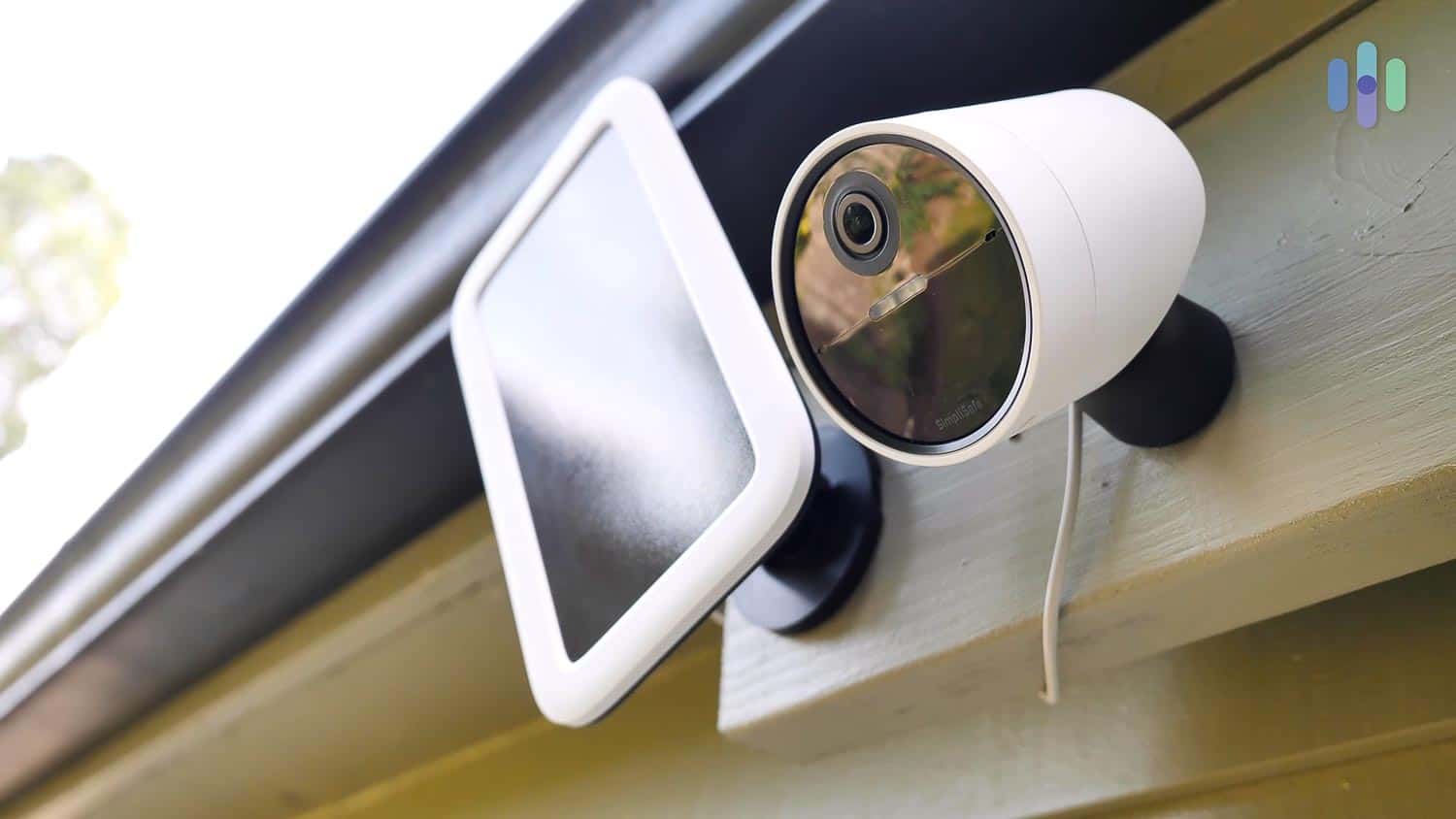
Wireless vs. Wired Security Cameras
Both wireless and wired security cameras capture and transmit video, but because they do their jobs in different ways, you should think carefully about which one will work best for your particular security situation.
Wireless Cameras
Wireless cameras have a number of advantages:
- They are easy to install.
- They are easy to operate.
- They incorporate advanced features like machine learning.
- You can view footage anywhere, even without a security hub.
However, there are some downsides to wireless cameras:
- They depend on Wi-Fi signals to work.
- They require lots of bandwidth to transmit clear images.
- They may be prone to signal loss or interference, especially when placed outdoors.
Wired Cameras
These are some advantages of wired cameras:
- They can easily transmit high-definition videos over Ethernet or coaxial cables.
- No one can jam them.
- Wired communication is almost always more reliable than wireless.
Wired cameras have some drawbacks as well, though:
- Wire can be messy.
- A cut wire can mean no recordings at all.
FYI: Despite their name, most wired security cameras utilize some wireless technology. To transmit live video to your mobile device, for instance, a camera must access the internet directly or send signals to internet-connected security hubs.
In general, wired security cameras work better for those who have weak Wi-Fi signals or are especially concerned with reliability. Wireless is the right choice for anyone looking for simplicity and convenience, though.
Types of Wireless Security Cameras
There are three main types of security cameras, each designed for slightly different functions.
- Outdoor cameras: You install outdoor cameras, as the name implies, on the exterior of your home. They offer images of anyone or anything moving around your perimeter. As a result, outdoor cameras typically aren’t useful for apartment dwellers. You should also be aware that outdoor cameras are all given IP ratings, which tell you what kind of weather they can withstand. These devices must be rated at least IP 65, meaning they are “dust-tight” and can handle water projected by a nozzle. Many homeowners hide outdoor cameras so crooks can’t disable them.
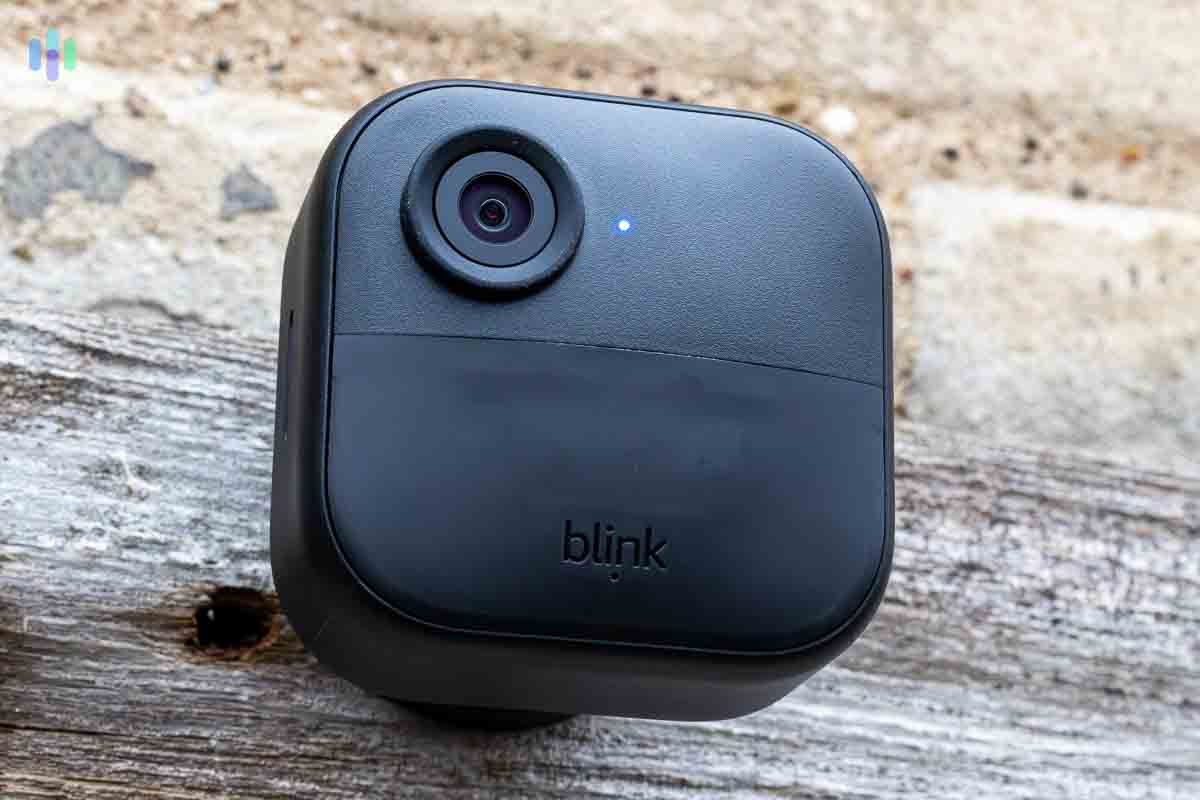
- Indoor cameras: Sometimes called “nanny cams,” indoor cameras go inside your home. They let you know when someone has managed to get into your house or apartment. You mount some indoor cameras like outdoor cameras, while others sit on flat surfaces.
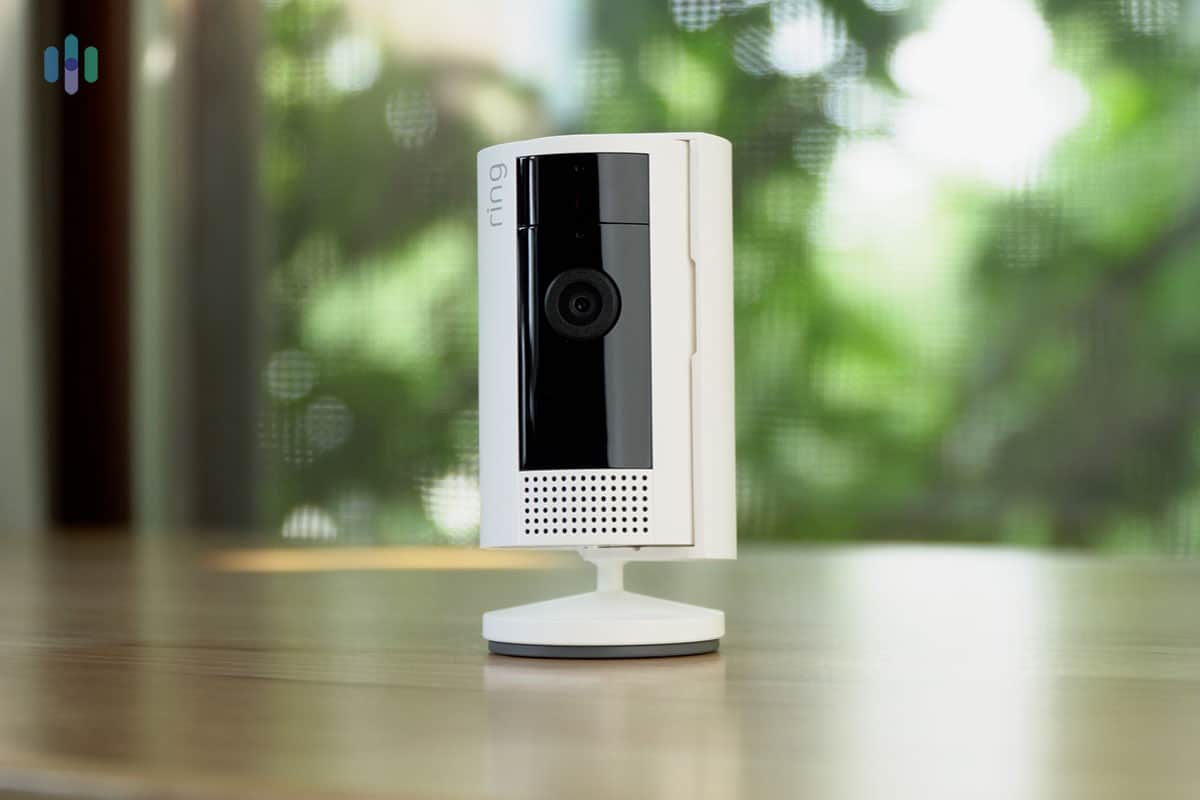
- Doorbell cameras: Doorbell cameras are among the most popular home security devices, since they protect the primary entrance to your home. Usually positioned on the outside of your home, just next to your front door, video doorbells allow you to see what’s happening on your doorstep.
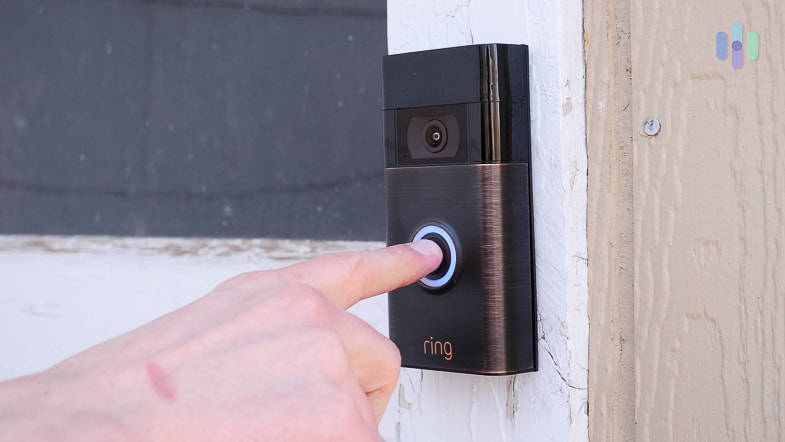
THE MORE YOU KNOW: Technically, doorbell cameras aren’t “wireless” cameras. They must draw power either from a battery or from a home’s wiring, so they are either “wired” or “wire-free.”
Do Wireless Home Security Cameras Work?
Wireless home security cameras work well for protecting your home. Motion sensors, window sensors, glass break sensors, and door sensors alert you if someone tries to enter your home, but only security cameras let you see what’s happening, so security cameras deter crime in the first place.
Beyond giving you the power to look at live images of your home, most wireless security cameras give you the ability to record video. Recordings are vital to help the police track down home invaders, serving as essential evidence for recovering stolen property.
Wireless security cameras don’t have to record a second of footage to be useful, though; they deter crime just by being there. The University of North Carolina Department of Criminal Justice & Criminology’s survey of 422 burglars found that the presence or absence of a security camera was a key factor in whether the burglars approached a house.2
Who Needs Wireless Home Security Cameras?
Anyone can benefit from wireless security cameras, but they are especially suited for these groups:
- Renters: Renters need surveillance systems as much as homeowners do, and there are many great security systems for renters out there. There are even security systems for apartment residents, specifically. Most likely, your landlord doesn’t want you tearing up walls to install a hardwired security system. You can install a wireless camera without making any permanent changes to the location.
- Landlords: If you’re a landlord, you might consider installing wireless security cameras so your tenants don’t have to. These devices are easy to install, and you can move them quickly from one spot to another to suit tenants. Wireless cameras provide security without the bulky equipment that can ruin your property’s curb appeal.
- Families: Security cameras aren’t just for preventing break-ins. You can also use them to keep an eye on your family when you’re away. With two-way audio, you can soothe a crying infant or let an injured parent know that help is on the way.
- Owners of smart homes: Smart homes are wireless. That means wireless security cameras can communicate with internet of things (IoT) devices directly, while wired cameras can’t. Once your house is talking to your security cameras, you can use voice commands to reposition cameras, adjust zooms, even pull up footage on your TV. You can also create routines where your smart lights come on if your cameras detect movement on your lawn.
- Anyone expanding their security system: If you already have a security system and are looking to add cameras, wireless cameras are a great choice because they’re so easy to install.
Buying Wireless Home Security Cameras
Whether to get a wireless security camera rather than a wired one is only your first decision. Next, you have to think about which brand and model of cameras to buy. There are several factors to consider as you make this choice.
- Motion detection: If your wireless security camera has built-in motion detection, it can begin recording the moment it senses movement.
- Cloud storage: While some wireless security cameras still come with DVRs for recording, most now record directly to cloud storage. This means you can review videos anytime, anywhere. You will want to consider, though, how much this extra storage may cost you.
- Remote control: With remote control, you can not only see live images on your mobile device, but also reposition your cameras or adjust the lenses.
- Lights: Many wireless security cameras feature lights. In some cases, these lights are simple motion-activated LEDs, bright enough to help you find your way in the dark. Other cameras include floodlights or even flashing alarm lights. Check out our Ring Spotlight Cam Battery review if you’d like a solid wireless outdoor camera with a spotlight.
- Two-way audio: Two-way audio is a particularly useful feature for wireless doorbell cameras, since it allows you to talk with anyone at your door. You can even talk with guests who are at the door when you’re not at home, giving them the impression you are home.
- AI: The smarter your wireless camera is, the less you have to worry about home security. Smart wireless cameras can tell the difference between different kinds of moving objects. In other words, they won’t send you alerts just because a squirrel runs by, but they will tell you if a prowler enters your yard.
- Smart integration: If you’re looking to turn your home into a smart home, you’ll want your automated technology to include a security system that works with Alexa or a security system that works with Google. That way, you can control your wireless cameras with your voice the same way you control your smart lights and smart locks.
- App: If you’re installing a wireless camera as part of a complete home security system, you may not need a mobile app just for the cameras. If you’re installing them on their own, however, it’s useful to have an app that allows you to make adjustments, livestream feeds, and review recordings.
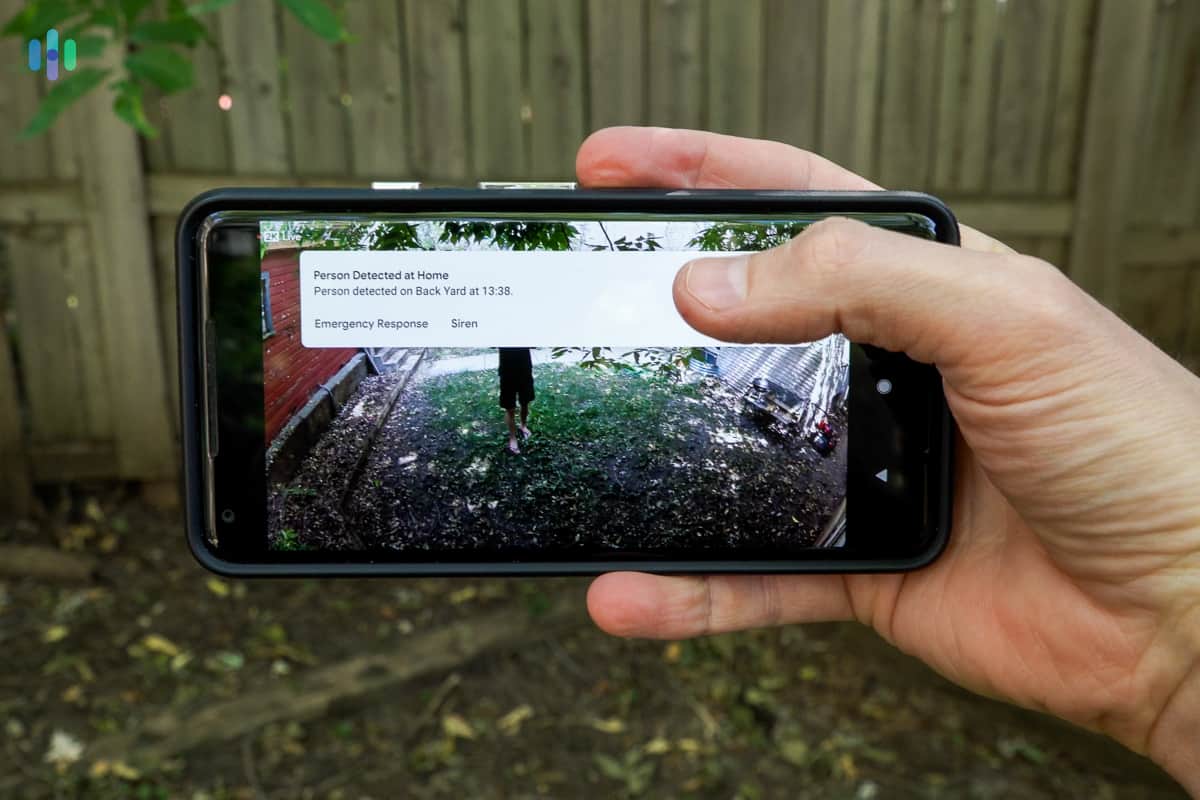
- Video specifications: You’ll also want to consider what the video from your cameras actually looks like, since recording an intruder isn’t useful if they just show up as a fuzzy blob. Pay attention to the video resolution and field of view. We like at least 1080p HD resolution, though we’re happiest with 4K security cameras. For the field of view, we insist on at least 120 degrees. Finally, test out the camera’s night vision capabilities, and see if you can make it focus on specific activity zones.
- Price: Last but certainly not least, you’ll want to consider the security cameras’ prices. You can find wireless cameras, such as the ones from Wyze, that cost as little as $20. On the other end of the price spectrum, Vivint’s Outdoor Camera Pro runs for $399. A lot of this variation is due to what features the cameras offer. In general, though, you should be able to find a quality wireless camera for around $100 to $200. To learn more, read our Wyze camera review or our Vivint Outdoor Camera Pro review, or dive deeper into costs on our Wyze pricing page or our Vivint pricing page.
Want great cameras but need to save time? We have you covered. Just head over to our list of the best wireless cameras on the market, or, if you’re looking specifically to protect your perimeter, check out our list of the best outdoor wireless cameras.
Installing Wireless Security Cameras
Some people balk when we talk about installing security cameras, but usually, you can do it in a matter of minutes, and it doesn’t require anything more than a drill.
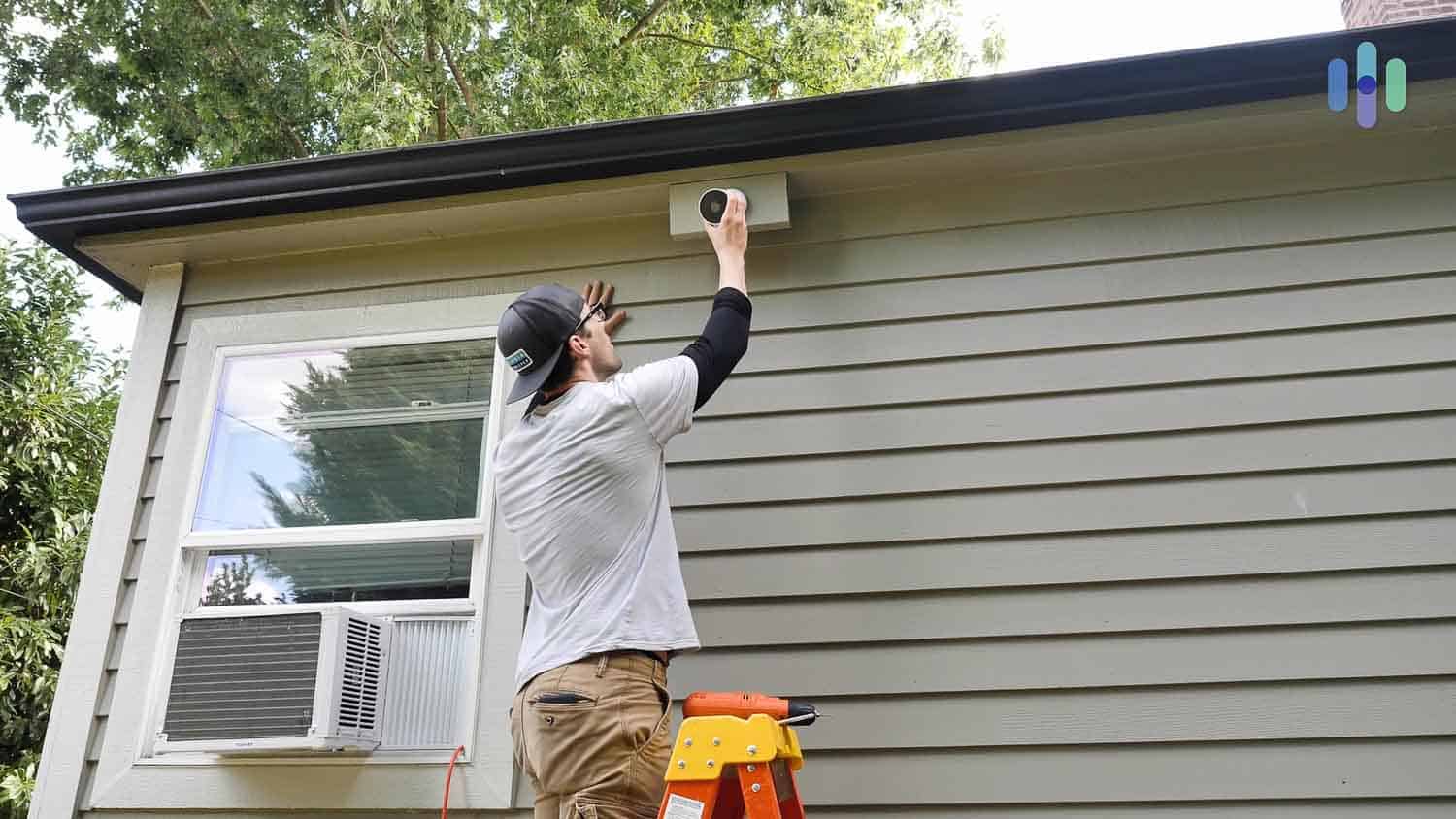
Decide Where to Place Cameras
In all likelihood, most of your installation time will be spent choosing your cameras’ locations. Here are a few things to consider as you go through this process:
- Power sources: While wireless cameras don’t need wires to communicate, you will need to plug them into outlets.
- Hubs: If your cameras need a hub, make sure you place them close enough to communicate.
- Wi-Fi: Make sure Wi-Fi cameras are within the range of your router to get a strong signal. Do the same for other kinds of wireless technology. If you’re using Bluetooth, for example, the dependent devices will need to be near enough to the controlling device to connect.
- First floor: For homes with more than one story, begin by putting indoor cameras on the first floor, since this is where most burglars enter.
- Chokepoints: Place indoor cameras at choke points, places burglars have to travel in order to get from one part of the house to another.
- Corners: Placing indoor cameras high in corners provides the widest possible line of sight of a room.
- Entrances: Place outdoor cameras at entry points first. Start with the front and back doors, but if possible, include off-street windows.
- Direction: Make sure your outdoor cameras are pointed at your property so you aren’t recording your neighbors, possibly making your security cameras illegal.
Install the Cameras
Installing some indoor cameras might mean placing them in flat spaces and plugging them in. If you need to mount your cameras, the steps are a bit more complicated, but still straightforward overall:
- Mark the locations where you plan to place the security cameras.
- Find the screws included in the security camera’s packaging.
- Use a drill and screws to attach the camera to the wall or ceiling.
- Plug the camera’s power cord into an outlet.
Should You Consider Professional Installers?
One of the advantages of wireless security cameras is that you should be able to install them yourself with minimal effort. You don’t, for instance, need to open up walls and access your home’s wiring. Even connecting the cameras to power sources is a simple matter of plugging them in.
However, if you are installing cameras in hard-to-reach areas like outside second-story windows, you might want to get a professional to help you. Learn more about DIY vs. professional security installation.
Can You Install Wireless Security Cameras in Apartments?
Wireless security cameras work well in apartments for a number of reasons.
- Less equipment: You may need a doorbell camera only, since your front door should be the only way into your apartment if you live above the first story. If your door has a peephole, you may want to invest in a Ring Peephole Cam.
- Easy installation: If you choose to install indoor cameras as well, you don’t need to hardwire cameras to your apartment’s electrical grid. In fact, you can place many wireless models on flat surfaces. That means all you need to do to install them is set them down and plug them in.
- No structural changes: Wireless cameras don’t require you to make alterations to your apartment.
Recap
Wireless security cameras put home security within anyone’s reach. You don’t need to be an electrician to set these devices up. You don’t have to cut into your walls. Essentially, if you can plug a cord into an outlet, the cameras will do the rest.
FAQs
We’ve put together a list of your most frequently asked questions about wireless home security cameras, along with our answers.
-
How do you power a wireless security camera?
You can power a wireless security camera through electrical outlets. In this sense, these cameras aren’t truly wire-free. In contrast, wire-free cameras include their own batteries, but as a result, they can’t provide continuous recording, since this would use up the battery quickly.
-
Can wireless cameras work without the internet?
Yes, wireless security cameras can work without the internet. Many cameras on the market, for instance, use cellular connections rather than internet connections. In fact, some cameras come with both technologies, so that if your Wi-Fi should go down, the cameras will switch to cellular as a backup.
-
Do wireless security cameras need a DVR?
Wireless security cameras do not need DVRs to operate. To begin with, the cameras can transmit a live feed directly to a hub or mobile device, which allows you to see what’s happening at your home at any time. In addition, you can have footage recorded and saved in a storage cloud.
Also, some cameras come with local storage. These devices record video directly onto micro-SD cards or hard drives, which you can then pull up on a computer.
-
How long do batteries last in wireless security cameras?
Batteries in wireless security cameras last one to three years. The batteries are only in the security camera as a backup should the power in your home go out. Batteries in wire-free security cameras, in contrast, last for about 14 hours of recording before you need to change them. This is because they are the cameras’ only source of power, and the cameras draw from them every time they’re on.
